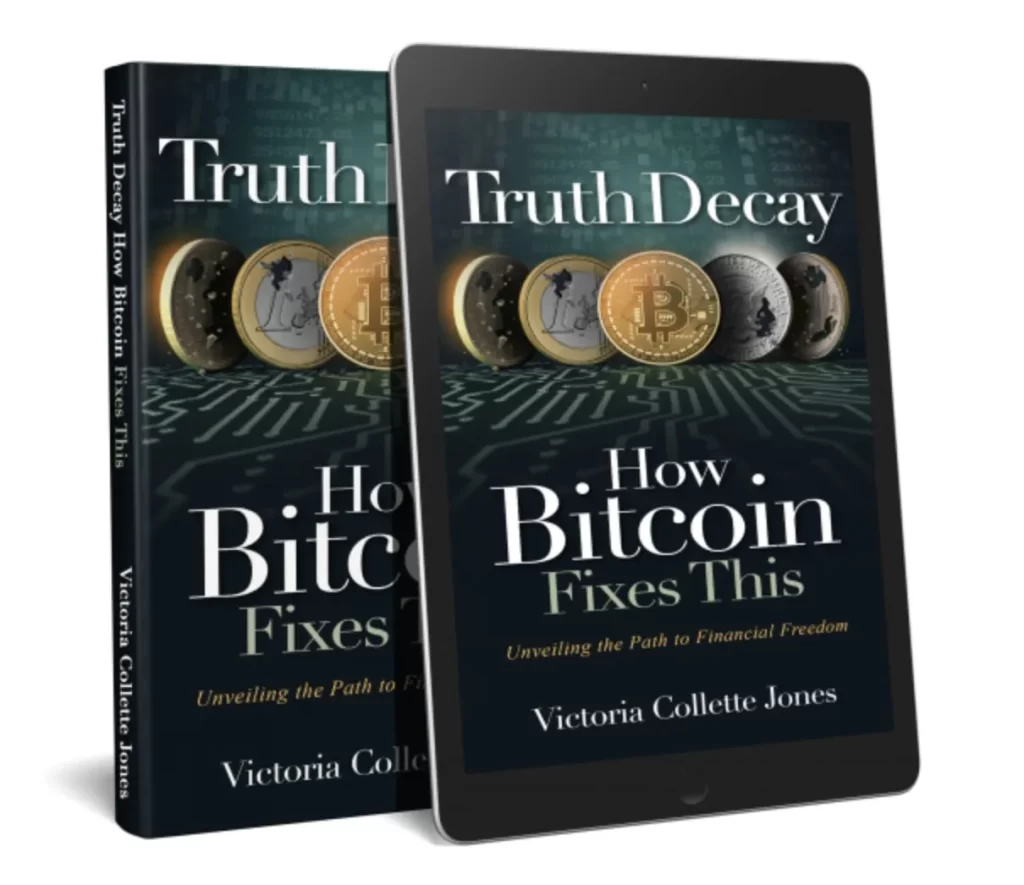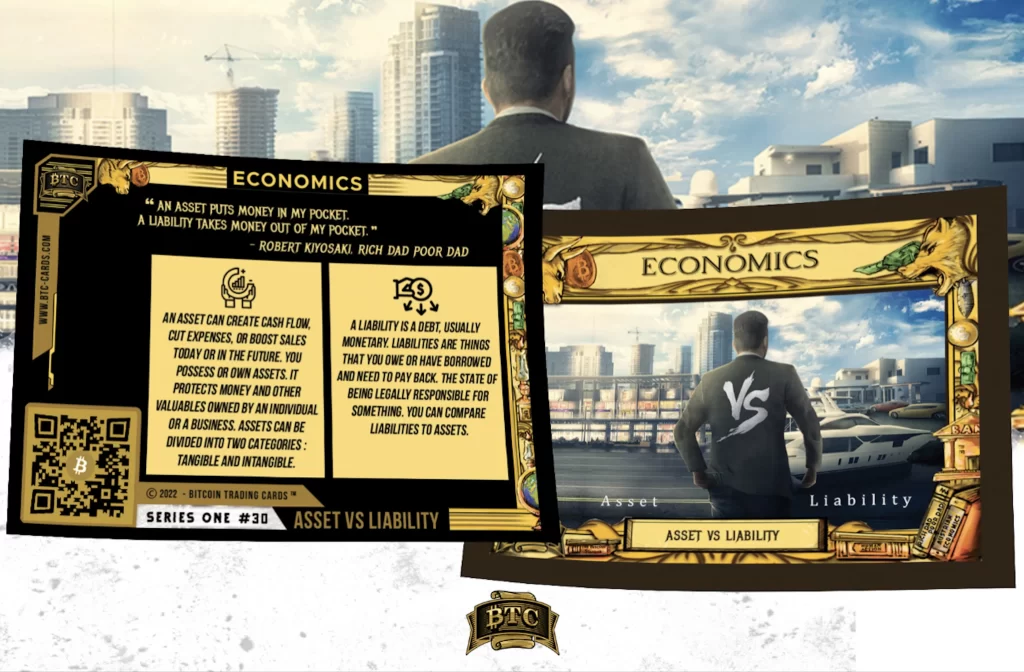In 2008 the most significant innovation in our known history came into being. The digital revolution was well underway, but the invention of computer software that could keep records unique still needed to be discovered. Computer records prior to 2008 were easy to copy and change retrospectively, which gave computers limitations when storing information permanently. All of this changed with the invention of Bitcoin, the first blockchain. Once invented, users could transmit information and records via software, ensuring that nothing could be tampered with from this point on. This data, now recorded on the blockchain, could be considered immutable.
By solving this problem and with the additional parameters programmed into Bitcoin’s initial software, The remarkably anonymous Satoshi Nakamoto produced a digital technology he described as a form of digital cash and, in doing so, a potential form of money that could improve on the economic properties of gold.
Gold, as a form of sound money, facilitated the prosperity of Europe in the late 1800s and was crucial to the success of the British Empire. The break from the gold standard in Europe at the beginning of the first World War (see my previous newsletter, Government and Bitcoin) was the beginning of our most recent iteration of fiat money worldwide. Fiat money is an experiment that has been tried many times throughout history and has always ended in inevitable failure (see Bitcoin and Property Rights).
It is always tempting, when held hostage to discipline, to want to be free of those limitations. The break from the Gold Standard was no different, and the desire to win the first world war was a profound motivator for this. The subsequent attempts to return to the Gold Standard and the machinations that flowed from it generated unfathomable pain and suffering. The excesses created the roaring 20s and the height of the 1929 stock market, leading to the crash and subsequent depression of the 30s.
A New Deal in the US and welfare services in Europe were enough to restore stability along with the establishment of international organisations, such as the International Monetary Fund and the Bank for International Settlements, requiring centralised management. However, the final monetary discipline was lost with the abandonment of convertibility of the dollar to gold by Richard Nixon in 1971, resulting in consequences we are in the final throes of managing today. The scale of the debt burden that grew over the 20th century is one that hardly anyone can visualise. Think of numbers extending into infinity, and you will start to get the picture!
I recently listened to a video where someone shared the unthinkable statistic that every man, woman and child on the planet is liable for a debt of $38,000 when the average worker’s salary worldwide is $10,000. He argued that introducing Central Bank Digital Currencies (CBDCs) would solve this and allow for the debt of countries to be wiped out, although individuals would still be liable for their debt!
There were so many errors in this statement that I felt compelled to address it, particularly concerning CBDCs.
While the debt is accurate, we have reached a point where workable solutions are desperately needed and quickly. This debt is unsustainable and directly linked to the wealth inequality we experience today, unlike the popular opinion that taxing the rich can solve wealth inequality or writing off a country’s debt. The truth is much more complicated, as the rich have laws that work in their favour, and they can afford to lobby the central planners to ensure these advantages remain. The average person would have no such power, even if they knew about such benefits in the first place. Writing off the debt of countries without addressing these hidden advantages would soon lead us to precisely the same place a few more decades down the road.
I explain this in more detail in my book Truth Decay – How Bitcoin Fixes This.
There are two leading schools of thought when it comes to economics.
Austrian economics is primarily concerned with sound money, as seen with a gold standard; money is what it is and can’t be changed. The Austrian economists study economics with this constant in mind.
Keynesian economists, on the other hand, examine how central planners can manage economies to serve society better. They achieve this by allowing governments and central banks to manage the levers of control of the financial system. They manipulate the very nature of money by using rules and laws and managing debt to serve their goals. Money is not a ‘constant’ in this case and frequently changes behind the scenes.
Fiat money means ‘money by decree’.
The 20th century was not the first time rulers invented fiat money; there have been many iterations throughout history. The break with a sound money system often begins in a situation of considerable duress, in the 20th Century case, the first World War. In the early 20th century, it was the source of much political discussion. The strong desire to re-establish a gold standard and the failure to achieve this led directly to the great depression; we have been staving off disaster with our financial system ever since. I discuss this in my other newsletter, Bitcoin and Property Rights.
The situation became so bad during the great depression, and the needs of the poor became so desperate that welfare systems were set up, much to the relief of the general population. These welfare systems did a great deal to settle restlessness in the people. Interestingly, governments could only afford these measures thanks to the Keynesians, who had successfully influenced the control governments now had over the financial system. Leaders established the New Deal in the US and the NHS in the UK. Most of Europe followed similarly.
As the years went by and people forgot the original manipulations or failed to understand them, it became increasingly difficult to recognise the distortions in the financial system. It also became frighteningly easy for those with keener knowledge to disguise the problems for those with no idea, allowing them to mislead and manipulate the general population more and more easily.
When the population was well educated, they could keep the politicians accountable. Still, as people lost knowledge of how the financial system works over time, this became more difficult. Those with more nefarious agendas could sneak in and insert their plans instead.
Politicians create our laws, granting privileges to elite groups we cannot access. Over time these disparities can become more and more sinister. Consider how governments bailed out banks in 2008 while small businesses went bankrupt.
In the early 20th Century, when politicians first discussed Austrian Economics, gold was the only means of sound money available. Therefore, many Austrian ideas are centred on a gold standard and the limitations that can come with this. On the other hand, Keynesian economics decided the tool (sound money) itself needed to be re-invented. That humanity could be much better off if allowed to play with the dynamics of how money works to make society fairer for everyone. An excellent idea in principle, but in practice, it can be challenging for everyone to agree on the best way forward, and disaster reigns in the ensuing chaos.
The idea behind Keynesian economics relied on banks to manage the amount of money in the system and governments to manage how it was spent. In the early days, the spending was prudent, but the manager became more generous as time passed, and the customer – the government – became more greedy and increasingly irresponsible. Disciplining the government on these matters became more and more difficult as, despite promises to the contrary, both political parties were guilty of spending too much as it suited them, lest they should lose their power.
The mechanism for managing such permission in the financial system has relied on our laws and, therefore, our legal system. Still, as our politicians make our laws and only a few of their colleagues are familiar with the intricacies of high finance, obscure rules that work to the benefit of the central planners rather than the general population can all too easily sneak in. The longer they get away with this, the more dysfunctional the system can become.
With software, the protocols are a system of rules or laws set up to run automatically, and there are myriad ways in which these rules can work.
The next biggest cryptocurrency, Ethereum, is an excellent example of this. Ethereum also operates as a blockchain, but there are substantial differences. The inventor of Ethereum, Vitalik Buterin, describes Ethereum as creating an infrastructure for ‘smart contracts’, or as I like to analogise it – a mechanism for ‘digital law’. As in the earth-bound world, we require the legal system to enforce contracts. In this case, the digital law of the blockchain is enforcing smart contracts.
With Bitcoin, it is difficult to change the code base. Software engineers can propose a change in the code, but then they discuss an amendment with input from the Bitcoin developers. Finally, it is suggested and debated by the Bitcoin community. Implementation of the changes occurs only when they are widely adopted by the miners and node operators updating the software on their nodes. This mechanism demonstrates one of the many design features that help to keep Bitcoin decentralised.
Ethereum, on the other hand, manages its changes centrally through a group of core developers, and the overall community has much less of a say in implementing any changes. An example of these changes, just last year, was a move from a proof of work concept to manage the blockchain to a system of proof of stake. I go into this further in the video below.
Consider how easy or difficult it is for such laws and rules to be entered into a computer program and executed automatically for ease of implementation.
Consider how such laws digitally could come to be amended and corrupted like those in our existing political system, as I referenced earlier. What if a government could create a digital wallet and offer an allowance every week? If the citizen did not spend the credits in the wallet, it would be lost the following week, and the balance would reset. What if there were a social credit score that allocated extra credits for good behaviour and withdrew credits for civil disobedience? This seems fine when someone else is the source of trouble, but what happens when it affects you unfairly?
Many of the recent hype cycles in the cryptocurrency space have occurred as an extension of innovations on Ethereum. I go over these also in the video below. In 2017 there were ICOs or ‘Initial Coin Offerings. New companies offered a digital token (with their software protocol built as a second layer on Ethereum, known as ERC20 tokens), similar to a stock market stock. Several recently wealthy crypto enthusiasts invested in these digital tokens as they looked for the next opportunity for massive gains. Several early Bitcoin enthusiasts let go of a substantial amount of the Bitcoin they held during this phase before many of these companies crashed and failed.
At the end of 2017, an unanticipated surge in the popularity of ‘Crypto Kitties’, a way of trading unique pictures of digital cats, took off. The Ethereum network ground to a halt as the network struggled to meet demand. Crypto Kitties, however, were the forerunner to NFT’s ‘Non-fungible tokens’, linking real-world items to digital code. Art enthusiasts and celebrities loved these, and NFTs such as Rare Pepes and Bored Apes traded vociferously throughout 2019, 2020 and 2021, reaching an outstanding market value of almost $25 billion!
As technology becomes more sophisticated, further opportunities present themselves. The ease of trading on Ethereum lends itself to trading within digital games and worlds, now known collectively as ‘The Metaverse’.
As this occurs, world governments look on in horror as they realise that the digital world is creating innovations growing faster than they know how to monitor and control. When they catch up, it will be too late to turn back…
Many of these ‘metaverses’ or digital worlds create opportunities to experiment with new models of society. As youngsters and retirees are drawn rapidly into these worlds, behind the scenes, the game masters are being fed unprecedented data to mastermind their subsequent manipulation of the human psyche. In the meantime, governments and their rulers wrestle with regaining control over the Babylonian money system that they have used to ‘manage’ society for centuries.
The powers that were have managed to lull all of us into a false sense of security. You see, by managing the initial break with the gold standard during the first World War and their attempts to maintain a semblance of sound money ever since, along with welfare systems, to keep the public from getting restless. Without the time and resources to research further into how and why the world seems to be slowly falling apart, many fail to notice it—accepting blindly that this is how things should be.
With such blind acceptance, it is only natural that such organising forces believe that they can and should get away with recreating their flawed and broken system in the digital world. And what better-flawed framework to use than the erratic – trying to please everyone while managing to maintain control blockchain of Ethereum?
Welcome to the next iteration of the Blockchain, Central Bank Digital Currencies – CBDCs. The operative word being CENTRAL.
To continue the policies of the central powers, the Central Banks need a blockchain that allows them to continue using the levers that have given them so much control over the last one hundred years. Using laws and rules set up using these parameters, they can keep the game going while eliminating several expensive layers of administration and buildings below them. These add up to a series of powerful motivators; no wonder governments worldwide are talking quite seriously about introducing CBDCs.
However, as a humble member of the population of humanity, I implore you not to be deceived. The way our money works is critical to the infrastructure of our society. It may be tempting to leave control over the entire system to those who seem to know better, but this creates a honeypot for tyrants and dictators.
Fortunately, governments are behind the curve with this technology. Blinded by their arrogance, they dismissed Bitcoin in the early days, believing it would never amount to anything. As it gained traction, they began a search for the anonymous developer Satoshi Nakamoto, who they still have not found. In the meantime, Bitcoin has grown from strength to strength with the most significant number of developers out of all the digital currencies, now working furiously to ensure the success of the most incredible tool for freedom humanity has ever had. A form of sound money; that is almost impossible to corrupt and, therefore, futile to attempt to control.
Sound money is a difficult thing to create. The value of gold spanned ages, not just years, decades or centuries. As civilisations came and went, their monetary systems invariably returned to gold. As society touches the brink of collapse this time, will it revert to gold, or will it attempt a digital future using sound money on a blockchain? But not just any blockchain, a decentralised one with balanced incentives to keep the integrity of the network sound. A robust framework for humanity with which they can reliably trade with each other. Or will we allow the politicians and the ‘law’ to take over with their version of money through CBDCs? As we have witnessed over the last one hundred years, a centralised system that has shown itself to be untrustworthy and corrupt. The choice is ours; will we choose digital money or digital law?
Until next time enthusiasts!
Victoria
Blockchains and Digital Ledger Technology
As the conversation around CBDCs heats up, find out how they really work with this video providing crucial information!




